Jan. 23, 2019
Prelims Pointers
Jan. 23, 2019
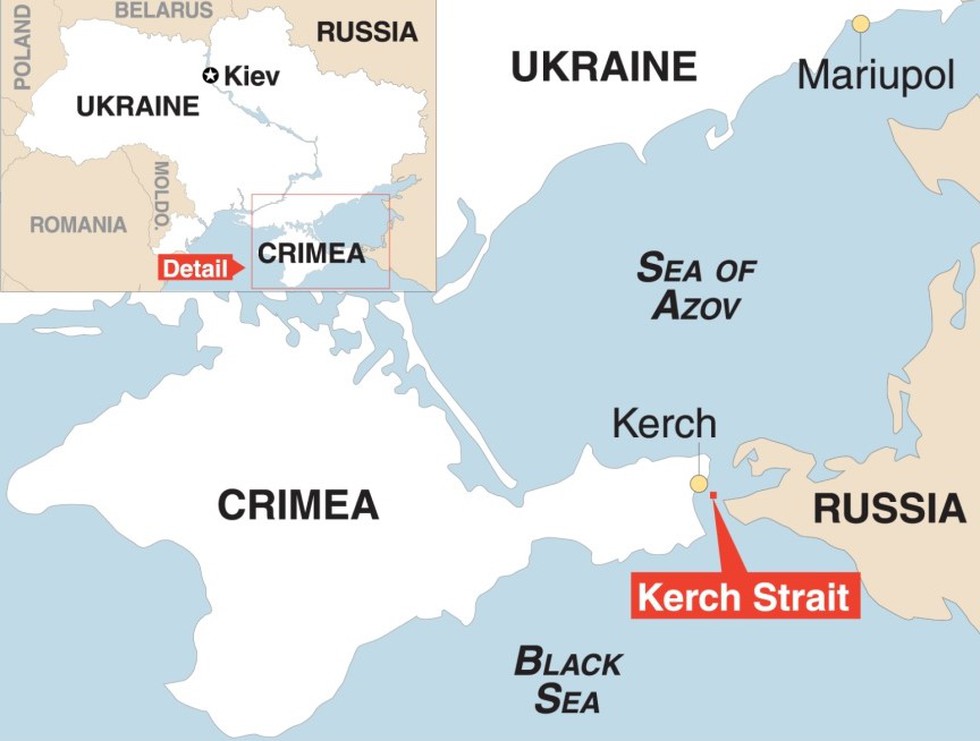
About:
- Location:
- The Kerch Strait is a strait connecting the Black Sea and the Sea of Azov.
- It separates the Kerch Peninsula of Crimea from the Taman Peninsula of Russia's Krasnodar Krai.
- The Kerch Strait is a strait connecting the Black Sea and the Sea of Azov.
- Nomenclature: it derives its name from Kerch (a city on the Kerch Peninsula in the east of the Crimea).
Prelims Pointers
Jan. 23, 2019
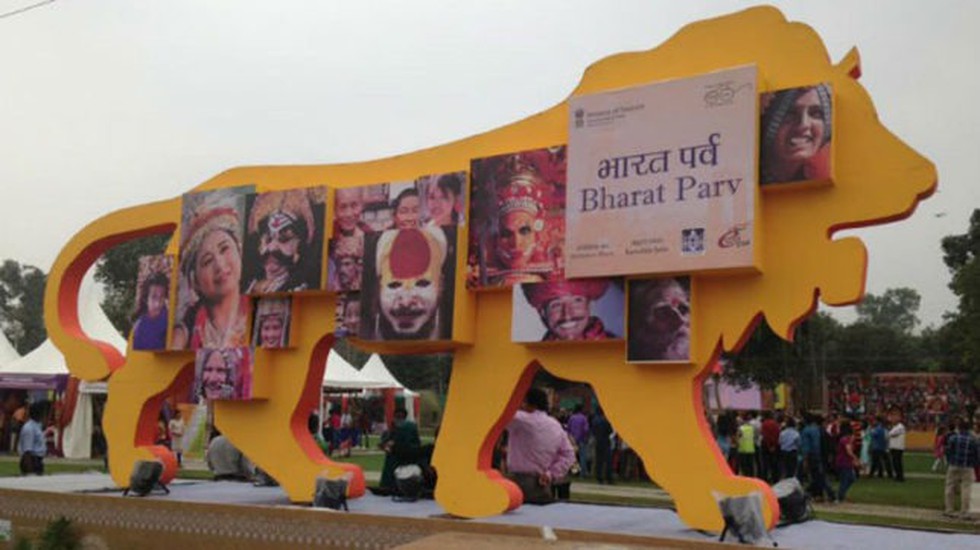
About:
- Background: Bharat Parv is being celebrated as part of Republic Day celebrations since 2016.
- Objective: To generate a patriotic fervour, promote the rich cultural diversity of the country and to popularize the idea of Ek Bharat Shreshtha Bharat.
- Organized by: The Ministry of Tourism in collaboration with other central Ministries.
- Duration: 26th to 31st January 2019 (The 5-day event is a part of Republic Day Celebrations).
- Venue: Red Fort, Delhi.
- Highlights of this year: The Display of Republic Day Parade Tableaux, Performances by the Armed Forces Bands (Static as well as dynamic), a Multi-Cuisine Food Court, Crafts Mela, and Photo Exhibition by the Directorate of Advertising and Visual Publicity (DAVP).
Prelims Pointers
Jan. 23, 2019

About:
- Composition: Joymati Bahini comprises women sub-inspector and constables of the Railway Protection Force (RPF) of Lumding Division in Assam.
- Objective: The main aim of the Joymati Bahini is to strengthen women security around Guwahati region within railway premises and trains.
- Comment: It is a significant step towards enhancing the security of women in the North East region.
Railway protection force (RPF):
- Administration: RPF is under the control of Ministry of Railways. It is headed by the Director General (DG).
- Functions: It has the primary duty of protection of railway property, passenger area, and passengers. RPF is NOT responsible for ALL aspects of railways security as it shares its duties with the Government Railway Police (GRP) and the District Police.
- Power: It has the power to arrest, investigate and prosecute criminals.
- Background:
- The Railway Security Force (RSF) was established in The Railway Protection Force Act, 1957 renamed RSF to Railway Protection Force (RPF) and expanded the force’s legal powers (thus it’s a statutory body).
- In 1980s it was transformed into an ‘Armed Force of the Union’ by giving enhanced powers.
- The Railway Security Force (RSF) was established in The Railway Protection Force Act, 1957 renamed RSF to Railway Protection Force (RPF) and expanded the force’s legal powers (thus it’s a statutory body).
Prelims Pointers
Jan. 23, 2019

About:
- Objective: Aim of the first-ever ‘Total Cleanliness Survey’ of the Railways was to assess the progress of the ‘Swachh Rail-Swachh Bharat’ mission and promote healthy competition among trains.
- Conducted by: The Indian Railway Catering and Tourism Corporation (IRCTC).
- Methodology: A total of 15,360 passengers from 16 zones, took part in the survey covering 209 trains. In this, IRCTC asked passengers about toilets, linen, housekeeping to rank trains.
Results:
- ‘Premium’ category trains: This category included the Rajdhani, Shatabdi, Duronto, Tejas and Gatiman.
- North Western Railway (NWR) topped the zonal rankings in this category, while South Central Railway finished at the bottom.
- Out of the Rajdhanis surveyed, the Mumbai Rajdhani was the cleanest. Among Shatabdi trains, the Pune-Secunderabad Shatabdi was the cleanest.
- North Western Railway (NWR) topped the zonal rankings in this category, while South Central Railway finished at the bottom.
- ‘Other than Premium’ category’ trains: This category included Sampark Kranti, Intercity, Jan Shatabdi and other Mail and Express trains.
- Southern Railway topped the Zonal Rankings in this category, while the East Central Railway was the dirtiest.
- The Kochuveli-Chandigarh Sampark Kranti was the cleanest among the Sampark Kranti trains. The KSR Bengalaru-Ernakulam train topped among Intercity services.
- Southern Railway topped the Zonal Rankings in this category, while the East Central Railway was the dirtiest.
Prelims Pointers
Jan. 23, 2019
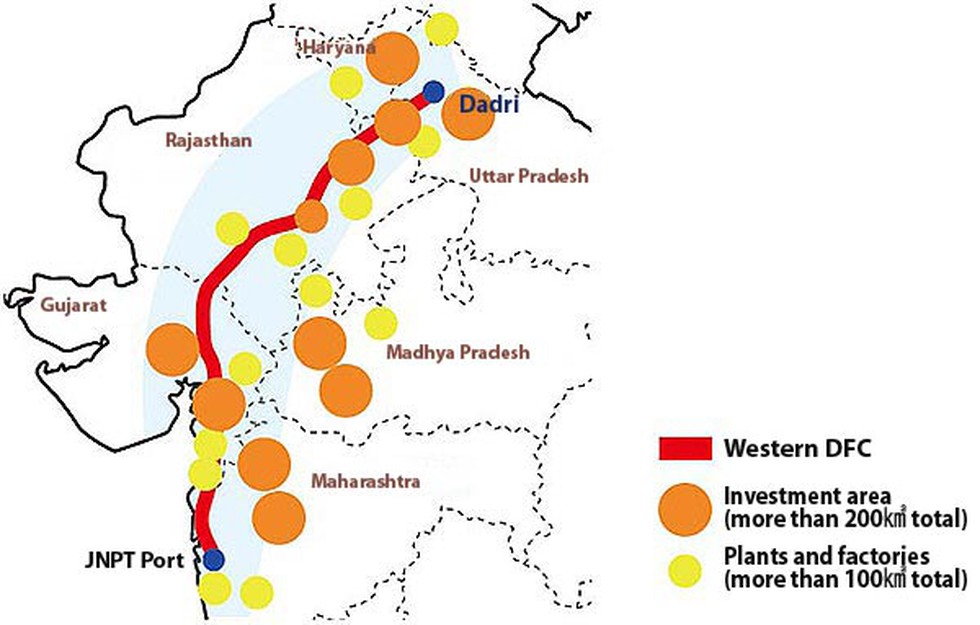
About:
- Jawaharlal Nehru Port Trust (JNPT) is the largest container port in India, handling around 55% of total container handled by all Major Ports in India.
- Location: It is located east of Mumbai in Navi Mumbai, Maharashtra. This port on the Arabian Sea is accessed via Thane Creek.
- Nomenclature:
- JNPT is also known as Nhava Sheva. Its common name derives from the names of Nhava and Sheva villages that were situated here.
- This port is also the terminal of Western Dedicated Freight Corridor (in construction).
- JNPT is also known as Nhava Sheva. Its common name derives from the names of Nhava and Sheva villages that were situated here.
- Established in: 1989.
- Lloyds Report: The Jawaharlal Nehru Port Trust (JNPT) got listed amongst the top 30 container ports globally, as per the latest Lloyds Report. JNPT rose up by five spots, to be 28th on the list, compared to its previous ranking.
Prelims Pointers
Jan. 23, 2019
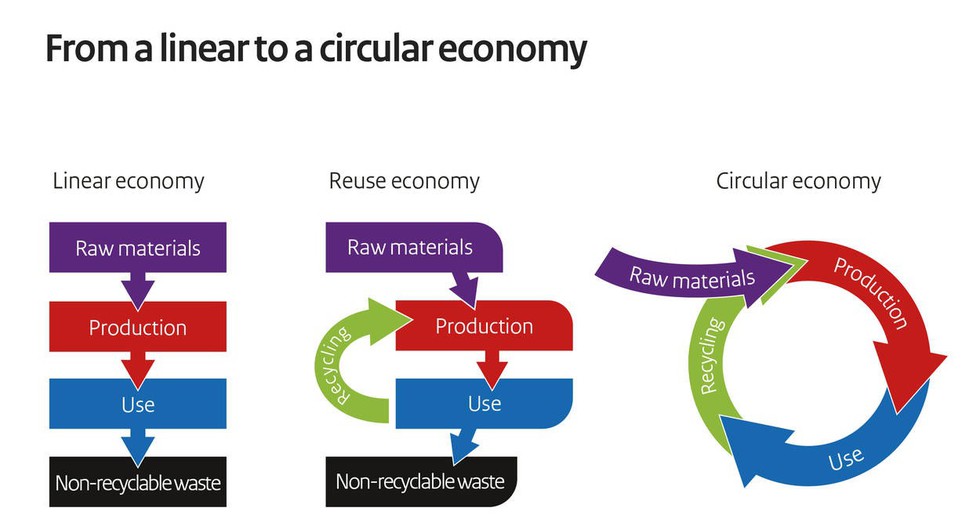
About:
- Objective of Resource Efficiency & Circular Economy strategy: To make recommendations for enhancing the resource-use efficiency in the Indian economy, develop indicators for monitoring progress, and create an ecosystem for minimizing environmental impacts.
- Recommendations: The status paper brings out 30 recommendations out of which 14 recommendations have identified as priority actions. Some of these are:
- Formulation of a National Policy on Resource Efficiency (RE)/Circular Economy (CE),
- Establishment of Bureau of Resource Efficiency (BRE),
- Mainstreaming RE & CE in existing flagship missions,
- A Modern Recycling Industry with level playing between primary and secondary producers,
- R&D for development of scalable technologies for RE & CE, and
- Development and promotion of skill and capacity building programmes for informal sector.
- Formulation of a National Policy on Resource Efficiency (RE)/Circular Economy (CE),
- Significance: RE & CE is closely interlinked with climate change and implementing it would help in achieving the climate change target of limiting temperature increase to 2 degrees Celsius.
Circular Economy?
- A circular economy is an alternative to a traditional linear economy (make, use, dispose) in which we keep resources in use for as long as possible, extract the maximum value from them whilst in use, then recover and regenerate products and materials at the end of each service life.
- A circular economy is important for reducing waste, driving greater resource productivity and helping in reducing the environmental impacts of production and consumption.
Prelims Pointers
Jan. 23, 2019
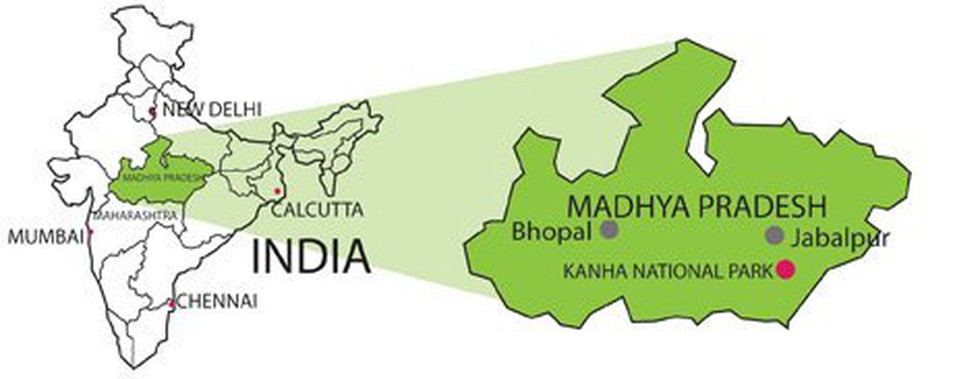
About:
- Kanha National Park is a national park and a Tiger Reserve.
- Location: It is located in the Mandla and Balaghat districts of Madhya Pradesh. It is the largest national park in Madhya Pradesh with 940 sq. km under it.
- Background:
- In the 1930s, Kanha area was divided into two sanctuaries, Hallon and Banjar, of 250 and 300 km². Kanha National Park was created on 1 June 1955.
- Together with a surrounding buffer zone of 1,067 km² and the neighbouring 110 km² Phen Sanctuary it forms the Kanha Tiger Reserve.
- In the 1930s, Kanha area was divided into two sanctuaries, Hallon and Banjar, of 250 and 300 km². Kanha National Park was created on 1 June 1955.
- Fauna:
- The park has a significant population of Royal Bengal Tiger, leopards, the sloth bear, Barasingha and Indian wild dog.
- The Park is respected globally for saving the Barasingha from near extinction. It is also the first tiger reserve in India to officially introduce a mascot, "Bhoorsingh the Barasingha".
- The park has a significant population of Royal Bengal Tiger, leopards, the sloth bear, Barasingha and Indian wild dog.
- Flora:
- The lowland forest is a mixture of sal (Shorea robusta) and other mixed forest trees, interspersed with meadows.
- The highland forests are tropical moist dry deciduous type and of a completely different nature with bamboo on slopes (Dendrocalamus strictus).
- The lowland forest is a mixture of sal (Shorea robusta) and other mixed forest trees, interspersed with meadows.
- Tribes in the vicinity: The forest of the Kanha Tiger Reserve was originally inhibited by two indigenous tribes of Central India, the Gonds and the Baigas. The vicinity of the reserve is still occupied with the villagers of these tribes.
The lush sal and bamboo forests, grassy meadows and ravines of Kanha provided inspiration to Rudyard Kipling for his famous novel "Jungle Book”.
Prelims Pointers
Jan. 23, 2019

About:
- Location: Exercise SEA VIGIL, a first of its kind, is being undertaken along the entire 7516.6 km coastline and Exclusive Economic Zone of India.
- Stakeholders: It is involving all the 13 coastal States and Union Territories along with all maritime stakeholders, including the fishing and coastal communities.
- Objective: To holistically validate the efficacy of the measures taken since '26/11'.
- Duration of exercise: 22-23 January 2019.
- Salient Features:
- The exercise is a build up towards the major theatre level tri-service exercise TROPEX [Theatre-level Readiness Operational Exercise] which Indian Navy conducts every two years. SEA VIGIL and TROPEX together will cover the entire maritime security.
- The exercise will entail both seaward and shore-based monitoring.
- Seaward monitoring during the exercise will entail patrolling off coast by the Indian Navy, Indian Coast Guard, supported by the State Marine Police.
- Shore-based monitoring will entail enhanced vigil by the State Police along the coast.
- The exercise is a build up towards the major theatre level tri-service exercise TROPEX [Theatre-level Readiness Operational Exercise] which Indian Navy conducts every two years. SEA VIGIL and TROPEX together will cover the entire maritime security.
Prelims Pointers
Jan. 23, 2019

About:
- Instituted by: K. Birla foundation.
- Criteria: The award is annually given to an outstanding work of an Indian citizen published during the last 10 years in any of the languages mentioned in Schedule 8 of the constitution.
- Award Money: 15 lakh rupees.
- Winner of 2017: Noted Gujarati poet Sitanshu Yashashchandra, recipient of the Padmashri (2006), has explored politics of the times, the larger and more immediate human conditions in his award-winning work "Vakhar".
Besides the Saraswati Samman, the K.K. Birla foundation also gives away two other literary awards Vyas Samman and Bihari Puraskar besides G.D Birla Award for scientific research.
Prelims Pointers
Jan. 23, 2019
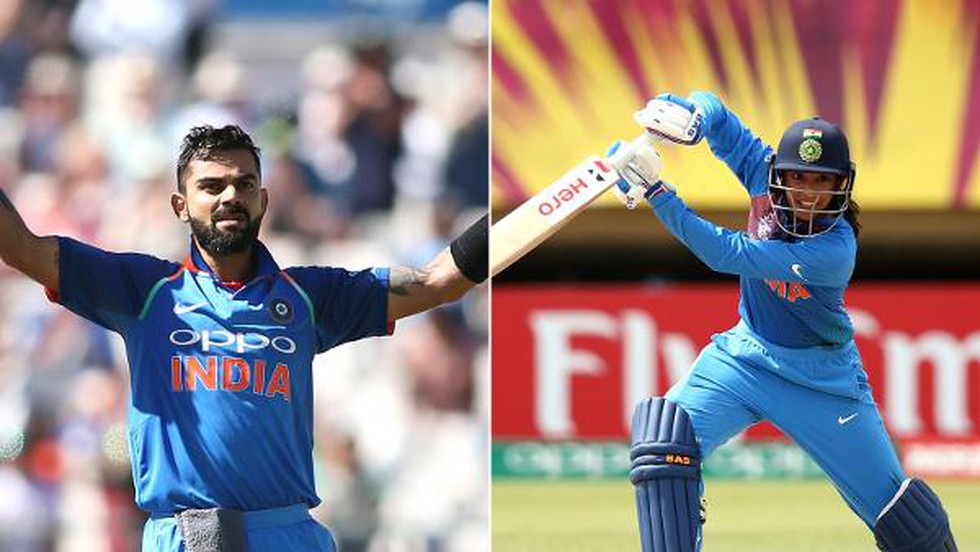
Men's Winners 2018:
- ICC Cricketer of the Year (Sir Garfield Sobers Trophy): Virat Kohli (India).
- ICC Men’s Test Player of the Year: Virat Kohli (India).
- ICC ODI Player of the Year: Virat Kohli (India).
- Captain of ICC's Test and ODI teams of 2018: Virat Kohli (India).
- ICC Associate Cricketer of the Year: Calum Macleod (Scotland).
- ICC Emerging player of the Year: Rishabh Pant (India).
- ICC Umpire of the Year 2018 (David Shepherd Trophy): Kumar Dharmasena (Sri Lanka).
- Spirit of Cricket award: Kane Williamson (New Zealand).
Women's Winners 2018:
- Rachael Heyhoe-Flint Award for Women's Cricketer of the Year: Smriti Mandhana (India).
- ICC Women's ODI Cricketer of the Year: Smriti Mandhana (India).
- ICC Women's T20I Player of the Year: Alyssa Healy (Australia).
- ICC Women's Emerging Cricketer of the Year: Sophie Ecclestone (England).
International Cricket Council (ICC)?
The International Cricket Council (ICC) is the global governing body of cricket. It is responsible for the organisation and governance of cricket's major international tournaments, most notably the Cricket World Cup.
The ICC does not control bilateral fixtures between member countries (which include all Test matches), it does not govern domestic cricket in member countries, and it does not make the laws of the game, which remain under the control of the Marylebone Cricket Club.
HQ: Dubai, United Arab Emirates.
Established in: 1909.
Jan. 22, 2019
Prelims Pointers
Jan. 22, 2019

About:
- Location: The 1.2 km-long Keediyan-Gandiyal bridge is located on the Ravi river linking secluded areas of Kathua district of Jammu and Kashmir with Punjab.
- Significance:
- It is the first inter-state bridge in Jammu and Kashmir.
- The travel distance between the two inter-state destinations of Jammu and Kashmir and Punjab will get shortened and at the same time, it will also reduce traffic on the Jammu-Kathua-Pathankot National Highway.
- It is the first inter-state bridge in Jammu and Kashmir.
Ravi river originates in the Himalayas in the Chamba district of Himachal Pradesh following a north-westerly course. It then flows along the Indo-Pak border for some distance before entering Pakistan and joining the Chenab River.
Prelims Pointers
Jan. 22, 2019
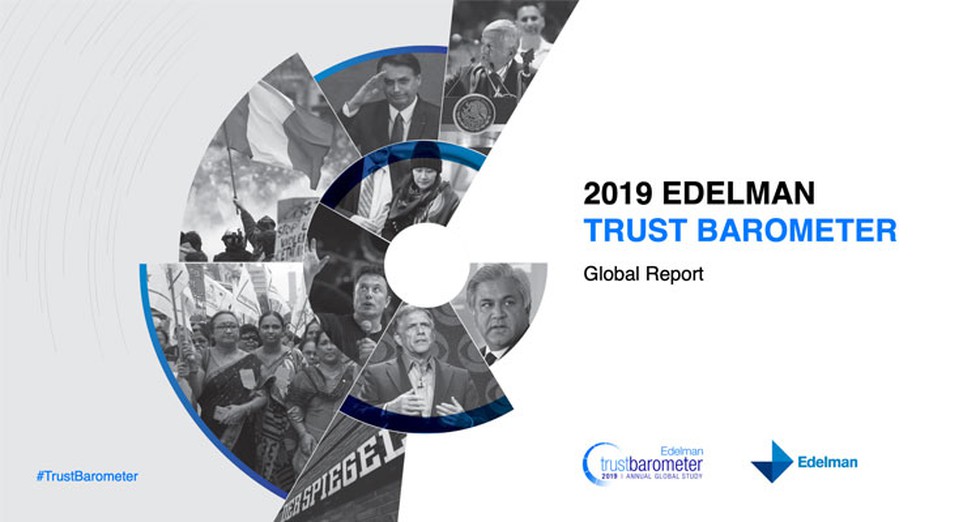
About:
- Released by: The Global Trust Index is annually released by communications marketing firm Edelman in Davos during the World Economic Forum (WEF).
- Methodology:
- The Index is the average per cent of trust in NGOs, business, government and media.
- The findings are based on an online survey in 27 markets covering over 33,000 respondents. The fieldwork was conducted between October to November last year.
- The Index is the average per cent of trust in NGOs, business, government and media.
- Key findings of Edelman Trust Barometer report:
- The Global Trust Index has witnessed a marginal increase of 3 points to 52.
- India is among the most trusted nations globally when it comes to government, business, NGOs and media. India was at the second place in the informed public category and third place in the general population category.
- China topped the Trust Index among both the informed public and the general population segments.
- In terms of trust in companies headquartered in each market, the most trusted are those from Switzerland, Germany and Canada. However, companies headquartered in India, Mexico and Brazil are the least trusted, followed by China and South Korea.
- People hold more trust in “My Employer” than in any single institution.
- The Global Trust Index has witnessed a marginal increase of 3 points to 52.
Prelims Pointers
Jan. 22, 2019
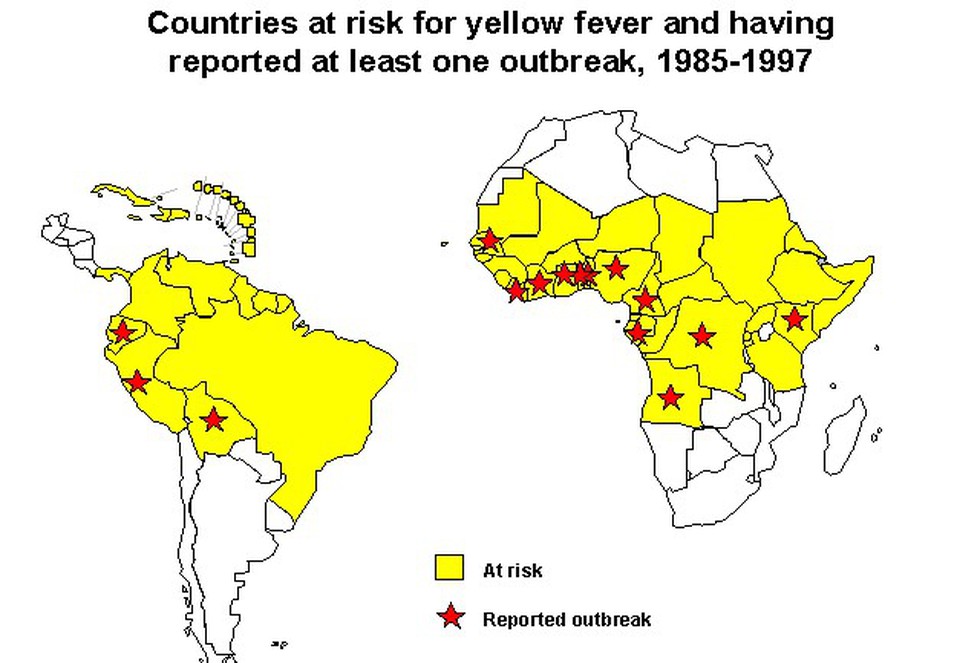
About:
- Nomenclature: Yellow fever is often associated with jaundice, hence the name yellow.
- Endemic countries: to WHO, Yellow fever occurs in 47 endemic countries in Africa in Central and South America. Around 90% of cases reported every year occur in Sub-Saharan Africa.
- Transmission:
- The yellow fever virus is transmitted by infected mosquitoes, most commonly from the Aedes species – the same mosquito that spreads the Zika, Chikungunya and Dengue virus. Haemogogus mosquitoes also spread it and are mostly found in the jungle.
- The disease cannot be spread by contact from one person to another.
- The yellow fever virus is transmitted by infected mosquitoes, most commonly from the Aedes species – the same mosquito that spreads the Zika, Chikungunya and Dengue virus. Haemogogus mosquitoes also spread it and are mostly found in the jungle.
- Symptoms: Once contracted, the yellow fever virus incubates in the body for 3 to 6 days. Symptoms usually present themselves in 2 phases.
- The first, "acute", phase usually causes fever, muscle pain or vomiting. Most patients improve and their symptoms disappear after 3 to 4 days.
- However, a small percentage of people enter a second, more toxic phase within 24 hours of the initial remission. They will experience high fever, JAUNDICE, and abdominal pain with vomiting and deteriorating kidney function.
- The first, "acute", phase usually causes fever, muscle pain or vomiting. Most patients improve and their symptoms disappear after 3 to 4 days.
- Prevention and Treatment:
- Yellow fever can be prevented by a vaccine that is protective for life. As single dose of yellow fever vaccine, known as 17D, provides life-long immunity against the disease.
- There is no specific treatment for yellow fever but good supportive treatment of symptoms, such as dehydration, fever and infection, improves survival rates. Associated bacterial infections can be treated with antibiotics.
- Yellow fever can be prevented by a vaccine that is protective for life. As single dose of yellow fever vaccine, known as 17D, provides life-long immunity against the disease.
Prelims Pointers
Jan. 22, 2019
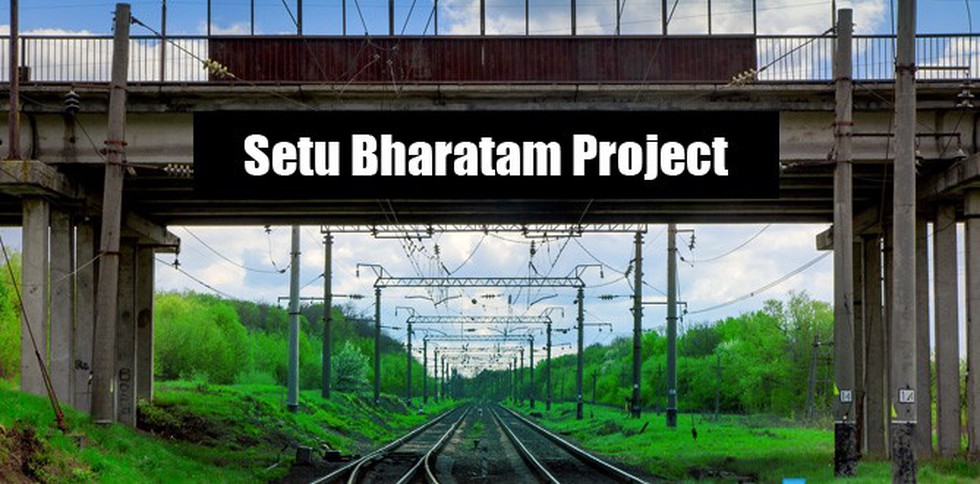
About:
- Objective of the programme: To make all National Highways free of railway level crossings by 2019 so as to prevent the frequent accidents and loss of lives at level crossings.
- Launched in: 2016.
- Strategy:
- 208 Railway Over Bridges (ROB)/Railway Under Bridges (RUB) will be built at the level crossings at a cost of Rs. 20,800 crores as part of the programme.
- In addition to this, about 1500 old and worn-down bridges will also be improved by replacement/widening/strengthening in a phased manner.
- 208 Railway Over Bridges (ROB)/Railway Under Bridges (RUB) will be built at the level crossings at a cost of Rs. 20,800 crores as part of the programme.
The Ministry of Road Transport & Highways has also established an Indian Bridge Management System (IBMS) at the Indian Academy for Highway Engineer in Noida, U.P to carry out conditions survey and inventorization of all bridges on National Highways in India.
Prelims Pointers
Jan. 22, 2019

Background:
- Since 2009, the scientists of the ZSI in collaboration with other institutes have been updating the Indian amphibian checklist periodically.
- The list bears the names of amphibian species from India, the year of discovery and their International Union for Conservation of Nature (IUCN) ‘red list’ conservation status.
- In 2009, the total number of species listed was 284. In 2010 it was 311, in 2011 it was 314, in 2012 and 2013 it was 342, in 2015 it was 384 and in 2017 it was 405 species.”
Amphibians List of 2019:
- The current list bears the names of 432 amphibian species from India.
- Among the amphibians listed, 19 species are treated as critically endangered and 33 species as endangered. The list describes 19% of amphibians as data deficient species and 39% as not assessed by the IUCN.
Do you know?
- The Zoological Survey of India (ZSI) is a premier Indian organisation in zoological research and studies to promote the survey, exploration and research of the fauna in the country.
- Parent agency: Union Ministry of Environment, Forest and Climate Change.
- Established in: 1916.
- Headquarters: Kolkata.
Prelims Pointers
Jan. 22, 2019

About:
- Location: The lake is located near Moirang in Manipur state, India.
- Key highlights:
- Loktak Lake is the largest freshwater lake in Northeast India.
- It is famous for the phumdis floating over it.
- Loktak Lake is the largest freshwater lake in Northeast India.
- Status:
- It has been designated as a wetland of international importance under the Ramsar Convention in 1990.
- It is also listed under the Montreux Record in 1993, "a record of Ramsar sites where changes in ecological character have occurred, are occurring or are likely to occur".
- It has been designated as a wetland of international importance under the Ramsar Convention in 1990.
Phumdis:
- Phumdis are a series of floating islands, exclusive to the Loktak Lake in Manipur.
- They cover a substantial part of the lake area and are heterogeneous masses of vegetation, soil and organic matter, in different stages of decay.
Keibul Lamjao National Park:
- The largest single mass of phumdi is in the south-eastern part of the lake, covering an area of 40 km2. This mass constitutes the world’s largest floating park, named Keibul Lamjao National Park.
- The park was formed to preserve the endangered Eld's deer subspecies, called sangai in the Meitei language, indigenous to this area.
Prelims Pointers
Jan. 22, 2019

Salient Features of The European Union General Data Protection Regulation (GDPR):
- Objective: GDPR is aimed at protecting the personal data of EU residents in the new digital world.
- The definition of personal data now explicitly includes location data, IP addresses, and identifiers such as genetic, mental, economic, cultural or social identity of a natural person.
- The GDPR is based on "privacy by design", a concept that data processing procedures are best adhered to when they are integrated at the point at which the technology is created.
- New rights: EU residents will have stronger rights over their personal data such as –
- Right to be ‘forgotten’: They can ask data controllers to erase personal data under certain circumstances.
- Right to ‘Data portability’: They can ask service providers to port data out to another service provider.
- Right to ‘Prevent automated profiling’: This, for instance, prevents a software program from automatically rejecting a mortgage application or a visa request without human judgement being involved.
- Right to ‘informed consent’: Data controller will have to provide consent terms that are clearly distinguishable.
- Right to be ‘forgotten’: They can ask data controllers to erase personal data under certain circumstances.
- Penalty: Flouting the rules can attract fines of up to 20 million euros ($24 million) or 4% of an organization’s global annual revenue, whichever is higher.
- Coverage: The regulation covers all the EU member states and citizens, so all global enterprises – regardless of where they are located – with operations or customers in EU must comply.
Prelims Pointers
Jan. 22, 2019

About:
- Nomenclature: The Awards are named after the spirit of engineering and creation patronized by Lord Vishwakarma, the Hindu deity of construction practices in India.
- Objective: The Awards are aimed for motivating young individuals, inspiring leaders and institutions/ organizations to raise their performance in their specific domains.
- Bodies involved: The awards were organized by All India Council of Technical Education (AICTE) in association with Engineering Council of India (ECI) and the Indian Society for Technical Education (ISTE).
- Theme: The awards for 2018 were presented under the theme “Empowerment of Villages through Technologies”.
- Categories: Various institutions were under the categories viz. (i) Water & Irrigation; (ii) Sanitation & Solid Liquid Waste Management; (iii) Rural infrastructure; (iv) Tourism; (v) Agriculture & Food; (vi) Education, Skill initiative & Start-ups; (vii) Rural Craft & Livelihood; (viii) Any other Rural Appropriate Technologies.
Prelims Pointers
Jan. 22, 2019
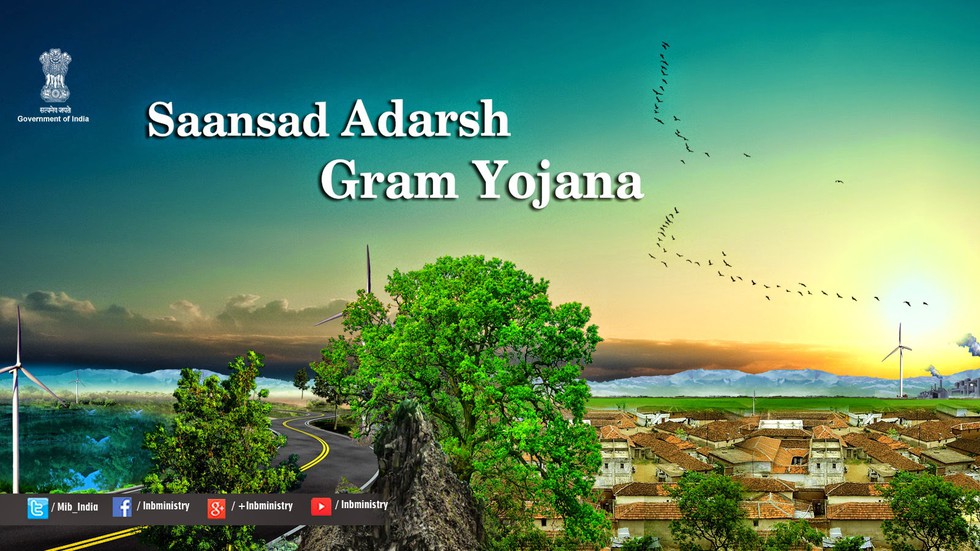
About:
- Instituted by: All India Council of Technical Education (AICTE).
- Objective: To honour the institutions working under the Sansad Adarsh Gram Yojana (SAGY) under the theme “Developed Village-Developed Nation” to raise their performance in the specific domains leading to significant development of villages.
- Winner: College of Technology and Engineering Udaipur, Rajasthan bagged the first award.
Sansad Adarsh GramYojana (SAGY) was launched in 2014. Under it, Members of Parliament adopt Gram Panchayats for its holistic progress. AICTE has encouraged institutes located in proximity of villages to develop the adopted villages.
Prelims Pointers
Jan. 22, 2019

About:
- Shivakumara Swami (1907 – 2019) was an Indian spiritual leader. He was a Lingayat religious figure and head of the Siddaganga Matha in Karnataka. He was described as the most esteemed adherent of Lingayatism.
- Educationist: He founded the Sri Siddaganga Education Society. He founded over 100 institutions for education and training, that range from nursery to colleges for engineering, science, arts and management as well as vocational training.
- Awards and Honours:
- in 2007, the Government of Karnataka awarded him the Karnataka Ratna award, the highest civilian award of the state.
- In 2015 the Government of India awarded him the Padma Bhushan.
- He was also referred to as Nadedaaduva Devaru (walking God) in the state of Karnataka.
- in 2007, the Government of Karnataka awarded him the Karnataka Ratna award, the highest civilian award of the state.
The Lingayats is a numerically and politically strong community of Karnataka. They are followers of Basaveshwara, a 12th century Kannada philosopher during the reign of the Kalachuri-dynasty king Bijjala I in Karnataka who founded the Lingayats sect.
Jan. 21, 2019
Prelims Pointers
Jan. 21, 2019

About:
- HQ: Cologny-Geneva, Switzerland.
- Founded in: 1971.
- Status: Not-for-profit organization. Under the Swiss Host-State Act, it is recognized as an International Institution for Public-Private Cooperation.
- Mission: Improving the state of the world by engaging business, political, academic, and other leaders of society to shape global, regional, and industry agendas.
- Davos meet:
- Annually, it organizes a meeting at the end of January in Davos, a mountain resort in Graubünden, in the eastern Alps region of Switzerland.
- The meeting brings together some 2,500 top business leaders, international political leaders, economists for up to four days to discuss the pressing global issues.
- Annually, it organizes a meeting at the end of January in Davos, a mountain resort in Graubünden, in the eastern Alps region of Switzerland.
- Reports published: It also produces a series of annual reports such as –
- Global Competitiveness Report,
- Global Information Technology Report,
- Global Gender Gap Report,
- Global Risks Report,
- Global Travel and Tourism Report,
- Financial Development Report and
- Global Enabling Trade Report.
- Global Competitiveness Report,
Prelims Pointers
Jan. 21, 2019
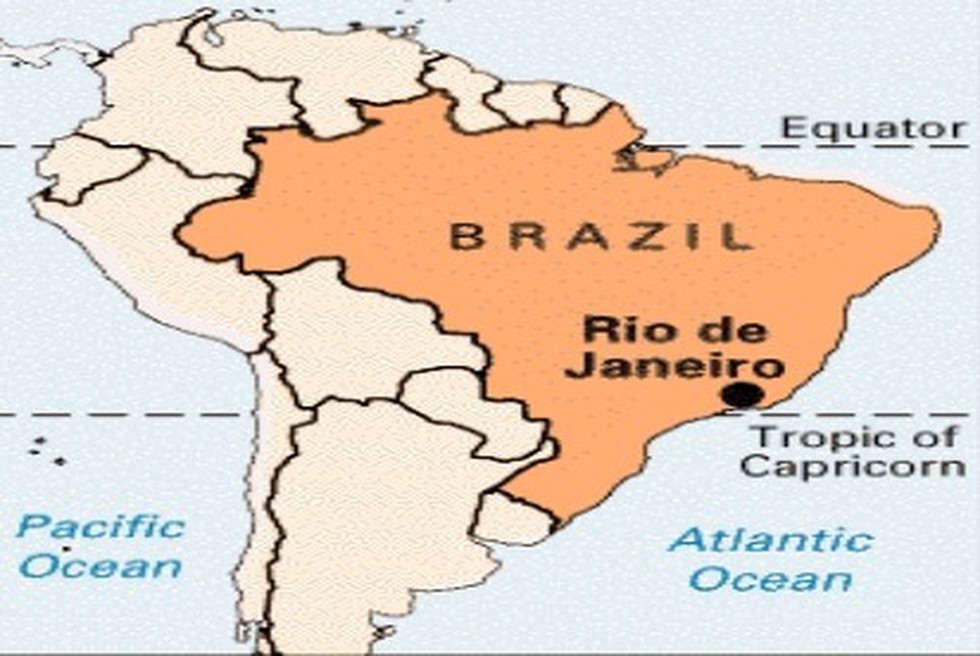
About:
- Bodies involved: Rio de Janeiro will be the first city to receive the title under a program launched together by UNESCO and the International Union of Architects (UIA) in November last year.
- Objective:
- The World Capital of Architecture is intended to become an international forum for debates about pressing global challenges from the perspectives of culture, cultural heritage, urban planning and architecture.
- The city will host the World Congress of UIA, in July 2020, an event that occurs every three years.
- The World Capital of Architecture is intended to become an international forum for debates about pressing global challenges from the perspectives of culture, cultural heritage, urban planning and architecture.
- About Rio de Janeiro: As one of the oldest cities in Brazil, Rio has a mix of modern and colonial architecture, with world-renowned sites like the statue of Jesus Christ and contemporary constructions like the Museum of Tomorrow.
International Union of Architects (UIA)?
- The International Union of Architects (UIA) is an international non-governmental organization that represents the world's architects. It is recognized as the only global architecture organisation by most of the United Nations agencies.
- Founded in: 1948.
- Secretariat: Paris.
Prelims Pointers
Jan. 21, 2019

About:
- Background: The Pravasi Bhartiya Divas (PBD) conferences began in 2003.
- Observance: It is generally held around January 9 as it was on January 9, 1915, when Mahatma Gandhi left South Africa and returned to India to lead India's independence struggle.
- Objective:
- It is observed to mark the contribution of Overseas Indian community towards their homeland;
- It also acts as an engagement and networking platform for overseas Indians, the government and the people of India.
- During the event, Pravasi Bharatiya Samman Award is also given.
- It is observed to mark the contribution of Overseas Indian community towards their homeland;
PBD 2019:
- Theme for PBD 2019: "Role of Indian Diaspora in building New India".
- Major events include –
- Youth PBD:The opening day on 21st January will mark the Youth PBD with the focus on the generation next especially from Uttar Pradesh.
- Plenary:PM Narendra Modi will inaugurate the PBD on 22nd January with the Prime Minister of Mauritius, Pravind Jugnath as the Chief Guest.
- Pravasi Bhartiya Samman Award (PBSA): The PBSA, the highest honour conferred on overseas Indian, will be conferred to selected NRIs, PIOs, organisation or institution established and run by the NRIs who have made significant contribution to various fields both in India and abroad.
- Youth PBD:The opening day on 21st January will mark the Youth PBD with the focus on the generation next especially from Uttar Pradesh.
Prelims Pointers
Jan. 21, 2019

About:
- Lymphatic filariasis (LF), commonly known as elephantiasis, is a neglected tropical disease.
- Cause:
- LF disease is caused mainly by Wuchereria Bancrofti and spread by Culex mosquito. This mosquito grows in dirty accumulated water.
- According to the WHO, infection occurs when filarial parasites are transmitted to humans through mosquitoes. The infection is usually acquired in childhood, causing hidden damage to the lymphatic system.
- LF disease is caused mainly by Wuchereria Bancrofti and spread by Culex mosquito. This mosquito grows in dirty accumulated water.
- Effect: LF does not kill the affected people, but may cause permanent disfigurement, reduced productivity and social stigma.
- Vulnerable groups: The disease affects the poorest population in society, particularly those living in areas with poor water, sanitation and hygiene.
- Global scenario: It is one of the oldest and most debilitating neglected disease, which is currently endemic in 73 countries of the world, including India.
- Indian scenario: Last year, Union Health Minister released the Accelerated Plan for Elimination of Lymphatic Filariasis (LF) 2018 for India at the 10th meeting of Global Alliance to Eliminate Lymphatic Filariasis (GAELF) held in New Delhi.
Maharashtra currently has a two-drug regimen consisting of diethylcarbamazine citrate and albendazole. The drugs are distributed in endemic areas once a year. In the triple-drug regimen, one more drug called ivermectin will be added.
Prelims Pointers
Jan. 21, 2019

About:
- Objective: The forum will explore the potential benefits and pitfalls of bilateral and multilateral collaboration in the regulation of homoeopathic medicinal products.
- Participants: International drug regulators dealing with homoeopathic/traditional medicines from various countries like France, Switzerland, Germany, Cuba, South Africa, Thailand, and Malaysia are expected to participate.
- Organizer of the forum: Central Council for Research in Homeopathy, under the Ministry of AYUSH.
- Dates: It will be organized from 23rd to 25th of January.
- Venue: Goa.
- Homeopathy is an alternative medical system that was developed in 1796 by Samuel Hahnemann in Germany.
- Its underlying theories are as follows -
- Like cures like: A substance taken in small amounts will cure the same symptoms it causes if taken in large amounts.
- Law of minimum dose: The lower the dose of the medication, the greater its effectiveness.
- Homeopathy treats each person as a unique individual. Treatments are “individualized” or tailored to each person.
- Like cures like: A substance taken in small amounts will cure the same symptoms it causes if taken in large amounts.
Prelims Pointers
Jan. 21, 2019

About:
- Saturn is encircled by rings.
- Discovery: Although the rings were first observed by telescopes centuries ago, knowledge about their formation and composition has been relatively slow coming from four robotic spacecraft that have visited Saturn — Pioneer 11, Voyager 1, Voyager 2 and Cassini.
- Features:
- The rings consist of a large number of small particles that are either icy snowballs or ice-covered rocks.
- They are about 400,000 km — equivalent to the distance between the Earth and the Moon — but are as little as 100 m thick.
- There are many rings — perhaps 500 to 1,000 — and there are also gaps within them.
- Particles range in size from “too tiny to see” to “the size of a bus”.
- The rings consist of a large number of small particles that are either icy snowballs or ice-covered rocks.
Recent findings by Cassini:
- The recent finding comes from Cassini’s final trajectory. In September 2017, the NASA spacecraft made its death plunge into Saturn’s atmosphere, and one of its last acts was to coast between the planet and its rings.
- Age of rings: The study has concluded that Saturn hasn’t always had rings. It suggests that the rings formed between 100 million and 10 million years ago, and are thus much younger than the 4.5-billion-year-old planet.
- Significance: Their young age puts to rest a long-running argument among planetary scientists.
- Some thought that the rings formed along with the planet itself, 4.5 billion years ago, from icy debris remaining in orbit after the formation of the Solar System.
- Others thought the rings were very young and that Saturn had, at some point, captured an object from the Kuiper belt or a comet and gradually reduced it to orbiting rubble.
- Some thought that the rings formed along with the planet itself, 4.5 billion years ago, from icy debris remaining in orbit after the formation of the Solar System.
Prelims Pointers
Jan. 21, 2019

About:
- An eclipse of the Moon (or lunar eclipse) can only occur at Full Moon – when Earth is located directly between the Sun and the Moon –, and only if the Moon passes through some portion of Earth's shadow.
- That shadow is composed of two cone-shaped components -
- The outer or penumbral shadow is a zone where the Earth blocks part but not all of the Sun's rays from reaching the Moon.
- The inner or umbral shadow is a region where the Earth blocks all direct sunlight from reaching the Moon.
- The outer or penumbral shadow is a zone where the Earth blocks part but not all of the Sun's rays from reaching the Moon.
- Types: Astronomers recognize three basic types of lunar eclipses –
- Penumbral Lunar Eclipse: The Moon passes through Earth's penumbral shadow. These events are of only academic interest because they are subtle and hard to observe.
- Partial Lunar Eclipse: A portion of the Moon passes through Earth's umbral shadow. These events are easy to see, even with the unaided eye.
- Total Lunar Eclipse: The entire Moon passes through Earth's umbral shadow. These events are quite striking due to the Moon's vibrant red colour during the total phase (totality).
- Penumbral Lunar Eclipse: The Moon passes through Earth's penumbral shadow. These events are of only academic interest because they are subtle and hard to observe.
Red colour during a Total Lunar Eclipse:
- During a total lunar eclipse, the Earth blocks the Sun's light from reaching the Moon. But indirect sunlight still manages to reach and illuminate it.
- However, this sunlight must first pass deep through the Earth's atmosphere which filters out most of the blue coloured light. The remaining light is a deep red or orange in colour. s
Prelims Pointers
Jan. 21, 2019

About:
- Flamingo Festival is a 13-year-long tradition of the region. The Flamingo Festival is organised annually to encourage tourism in Pulicat and Nellapattu.
- The highlight of this fest is the sight of colourful migratory birds from Siberia that visit the region for nesting and breeding.
- Around 9,000 to 12,000 migratory birds, belonging to 80 different species, arrive at Pulicat for the purpose of breeding in winter.
- After the breeding season is over, the migratory birds leave for their native region along with their fledglings.
- Around 9,000 to 12,000 migratory birds, belonging to 80 different species, arrive at Pulicat for the purpose of breeding in winter.
Pulicat lake is the second largest brackish water ecosystem in the country after the Chilika lake in Odisha.
Prelims Pointers
Jan. 21, 2019
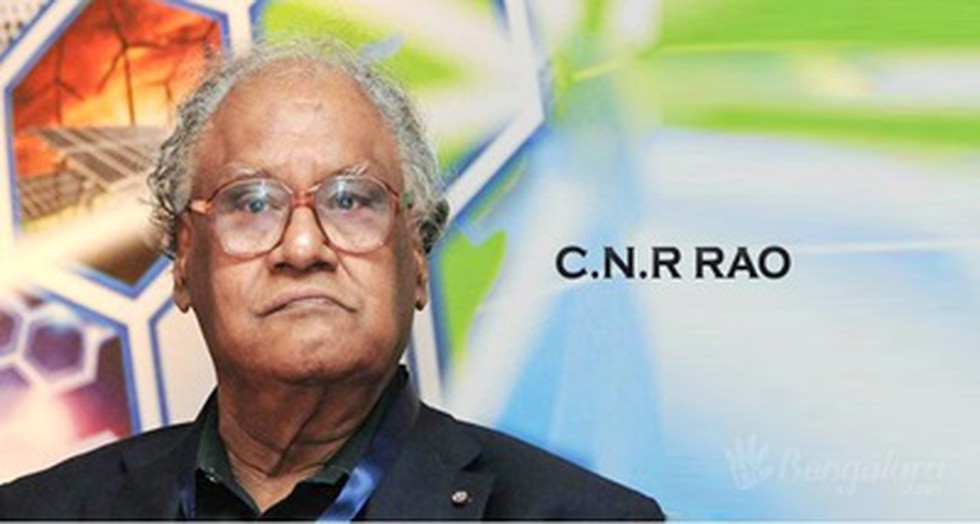
About:
- Instituted by: The Centre for Advanced Materials of the United Arab Emirates.
- Cash Prize: 1 lakh US Dollar.
- Award ceremony: The award will be presented to Professor Rao during the International Workshop on Advanced Materials at Ras Al Khaimain UAE on February 25, by Sheikh Saud bin Saqr Al Qasimi, the ruler of one of UAE's seven emirates Ras Al Khaima.
Professor C N R Rao is the National Research Professor, Linus Pauling Research Professor and Honorary President of Jawaharlal Nehru Centre for Advanced Scientific Research. He was awarded the Bharat Ratna, the highest civilian award of India in 2014.
Prelims Pointers
Jan. 21, 2019

About:
- As per the report, while the UK and France have regularly switched places owing to similar levels of development and roughly equal populations, India's climb up the rankings is likely to be permanent.
- PwC's Global Economy Watch report projects real GDP growth of 1.6 % for the UK, 1.7 % for France and 7.6 % for India in 2019.
- According to World Bank data, India became the world's sixth largest economy in 2017 surpassing France and was likely to go past the UK which stood at the fifth position.
- The US was the world's largest economy with a size of 19.39 trillion dollars, followed by China at 12.23 trillion dollars at the second place in 2017.
Jan. 20, 2019
Prelims Pointers
Jan. 20, 2019

About:
- Location: Khardung La is a mountain pass in the Ladakh region of Jammu and Kashmir. The pass on the Ladakh Range is north of Leh and is the gateway to the Shyok and Nubra valleys.
- Nomenclature: Locally, it is also known as "Khardong La" or "Khardzong La".
- Height: The elevation of Khardung La is 5,359 m. It is incorrectly claimed by some locals as the highest vehicle-accessible pass in the world.
- Significance:
- It is historically important as it lies on the major caravan route from Leh to Kashgar in Central Asia. About 10,000 horses and camels used to take the route annually.
- It is strategically important to India as it is used to carry supplies to the Siachen Glacier.
- It is historically important as it lies on the major caravan route from Leh to Kashgar in Central Asia. About 10,000 horses and camels used to take the route annually.
- History: It was built in 1976 and is maintained by the Border Roads Organisation.
Prelims Pointers
Jan. 20, 2019

About the study:
- The study was carried out by K.R. Subrahmanya, a former professor of Marine Geology, Mangalore University, and K.N. Prakash Narasimha, Professor of the Department of Earth Science, University of Mysore.
- Their findings were published in the Journal of the Geological Society of India and the study won the Radhakrishna Prize 2018 for best paper.
- The study was funded by the Union Ministry of Earth Sciences.
Key findings of the paper:
- Asteroid hit:
- Unlike the impact event that led to the extinction of the dinosaurs about 65 million years ago, this asteroid hit may have taken place 800 million to 550 million years ago, when there were very primitive life forms.
- The extra-terrestrial object was at probably 5 km in diameter. This impact created Kaveri Crater.
- Unlike the impact event that led to the extinction of the dinosaurs about 65 million years ago, this asteroid hit may have taken place 800 million to 550 million years ago, when there were very primitive life forms.
- Location:
- Kaveri Crater is between Nilgiris and Kodaikanal.
- Both the Palghat Gap and Dhimbam Ghats are a part of the Kaveri Crater, with the geological evidence stretching up to Belakavadi and Shivanasamudra in Karnataka.
- Kaveri Crater is between Nilgiris and Kodaikanal.
- Size:
- The area ‘Kaveri Crater’, is possibly the fourth largest in the world.
- The crater has a diameter of 120 km. Unlike smaller craters, Kaveri Crater can be visualised only through satellite images.
- The area ‘Kaveri Crater’, is possibly the fourth largest in the world.
Prelims Pointers
Jan. 20, 2019

Influenza:
- Influenza commonly known as “the flu”, is a contagious respiratory illness. It is caused by influenza viruses, a member of the ‘orthomyxovirus’ family.
- Influenza viruses infect the respiratory tract (i.e. nose, throat, lungs) and can cause mild to severe life-threatening illness.
- Types: There are 3 types of influenza (flu) viruses: types A, B, and C.
- Influenza A: Humans and many different animals are infected by it.
- Influenza B: Infects only humans.
- Influenza C: Infects Humans and pigs.
- Influenza A: Humans and many different animals are infected by it.
- Influenza A viruses are divided into subtypes based on two proteins on the surface of the virus namely the hemagglutinin (H) and the neuraminidase (N). Some of the most virulent strains of influenza are -
- H5N1 Avian (bird) flu.
- H1N1; originally referred as Swine flu.
- H5N1 Avian (bird) flu.
H1N1 Flu Virus (Swine Flu):
- Swine flu is an infection caused by type A influenza viruses.
- Who are infected? It's named for a virus that pigs can get. People do not normally get swine flu, but human infections can and do happen. In 2009 a strain of swine flu called H1N1 infected many people around the world. The virus is contagious and can spread from human to human.
- Symptoms: Symptoms of swine flu in people are similar to the symptoms of regular human flu and include fever, cough, sore throat, body aches, headache, chills and fatigue.
Oseltamivir/Tamiflu:
- Oseltamivir is an antiviral medication used to treat and prevent influenza A and influenza B.
- it is sold under the brand name It is on the World Health Organization's List of Essential Medicines (the most effective and safe medicines needed in a health system).
- Oseltamivir was approved for medical use in the US in 1999.
- Antiflu: In 2008, the Indian drug company, Cipla won a case in an Indian court allowing it to manufacture a cheaper generic version of Tamiflu, called Antiflu.
Prelims Pointers
Jan. 20, 2019
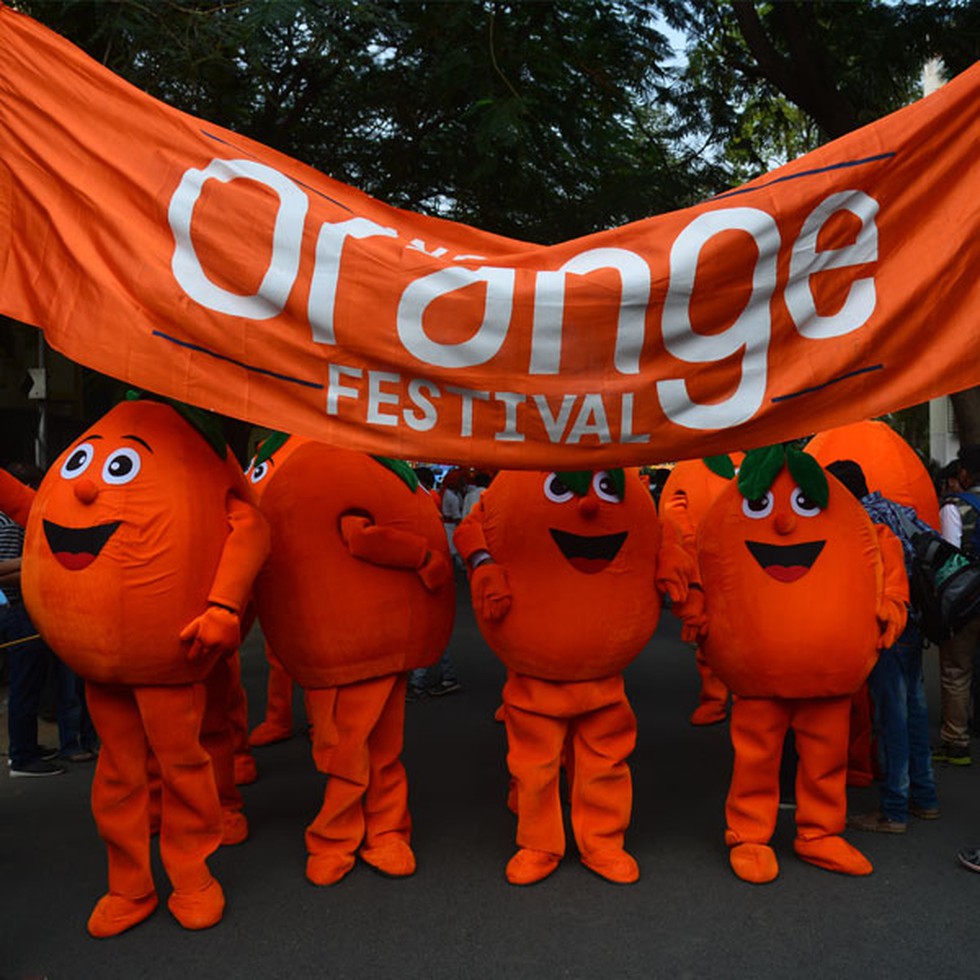
About:
- Venue: It is being held in Nagpur from January 18 to 21.
- Objective:
- The festival will showcase and brand the famed Nagpur oranges to the world, in order to boost its export.
- Agricultural experts and scientists from various countries will participate in the workshops and guide farmers.
- The festival will showcase and brand the famed Nagpur oranges to the world, in order to boost its export.
- Nagpur orange is a variety of orange grown in Nagpur, Maharashtra. It gives the city of Nagpur its pseudonym Orange City. It is rustic and pockmarked exterior which is sweet and has juicy pulp.
- In 2014, Nagpur Orange received the Geographical Indication.
Prelims Pointers
Jan. 20, 2019
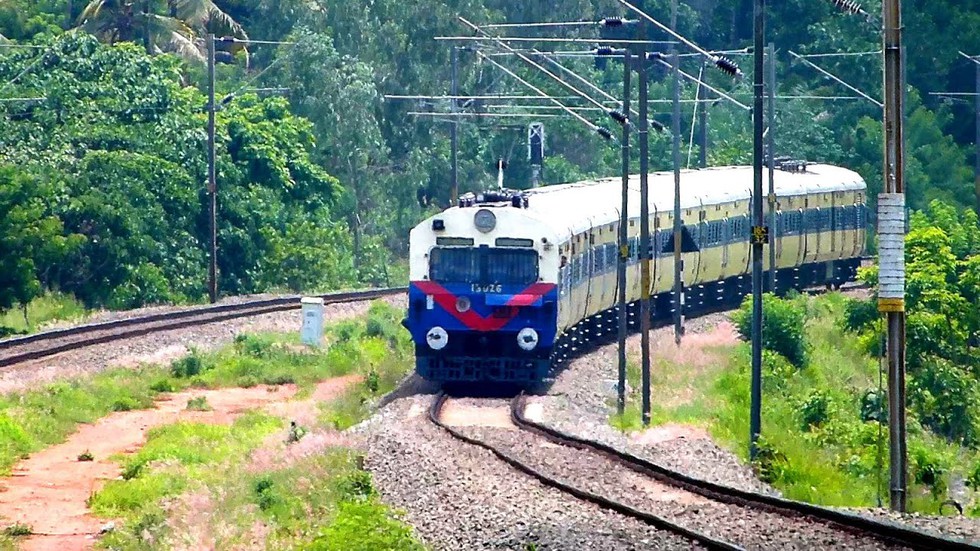
About:
- MEMU is an acronym for “Mainline Electric Multiple Unit”.
- MEMU is the Indian Railways designation of the commuter rail system in India for Trains running short distances in Semi-Urban and Rural areas - usually carry daily commuter traffic.
- The trains differ from the normal electric multiple units (EMU) that are designed for urban and semi-urban areas. It also differs from a Diesel Electric Multiple Unit (DEMU), in which a diesel engine drives an electrical generator or an alternator which produces electrical energy.
- Benefits: Passenger trains usually travel between 25 kilometres per hour to 40. On the other hand, the MEMU train has a maximum speed of around 100 kmph averaging at around 50 kmph.
Recent development:
- Railways will produce around 1,200 new MEMU coaches to replace around 300 passenger trains in the golden quadrilateral. It has set a target of producing around 6,000 new MEMU coaches in the next five years to completely free the routes from congestion.
- These new MEMU trains will have two toilets in each coach and will be safer and more comfortable than passenger trains.
Prelims Pointers
Jan. 20, 2019

About:
- Women will be inducted in graded manner to eventually comprise 20 % of total Corps of Military Police (CMP). Their role would range from probing rape and molestation cases to assisting the Army wherever required.
- Significance: The decision to induct women in the military police will enhance their representation in the armed forces.
- Present status of women in armed forces:
- This announcement comes in the aftermath of a similar announcement made by Chief of the Army Staff Bipin Rawat in December 2018 that the Army would induct women Jawans in the CMP, and further scope of recruiting women in Army posts would be explored thereafter.
- Currently, women are allowed in select areas such as medical, legal, educational, signals and engineering wings of the Army.
- This announcement comes in the aftermath of a similar announcement made by Chief of the Army Staff Bipin Rawat in December 2018 that the Army would induct women Jawans in the CMP, and further scope of recruiting women in Army posts would be explored thereafter.
Corps of Military Police (CMP):
- Corps of Military Police (CMP) is the military police of the Indian Army. They can be identified by their red berets and white belts. They also wear a black brassard with the letter’s MP imprinted in red.
- Role: Their key task is Policing the Cantonments and Army Establishments. It is also trained to handle prisoners of war, regulate traffic and handle basic telecommunication equipment such as telephone exchanges.
- Background: The First section of Indian Corps of Military Police was raised in 1939 during the World War 2.
Prelims Pointers
Jan. 20, 2019
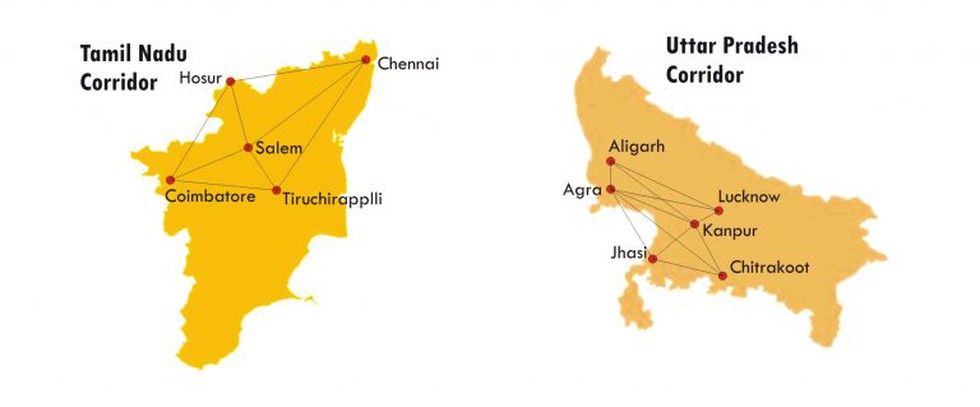
About:
- The Tamil Nadu corridor is expected to have six nodes at Trichy, Salem, Hosur, Kovai, Madurai as well as Chennai. It is expected to be a specialised facility in precision centred, aero component manufacturing.
- The Tamil Nadu Defence Industrial Corridor will be the country's second defence industrial corridor, the first one has already been launched in Aligarh, UP in August 2018.
- Both the corridors had been announced in 2018 in the budget as part of measures to indigenize defence production.
Prelims Pointers
Jan. 20, 2019
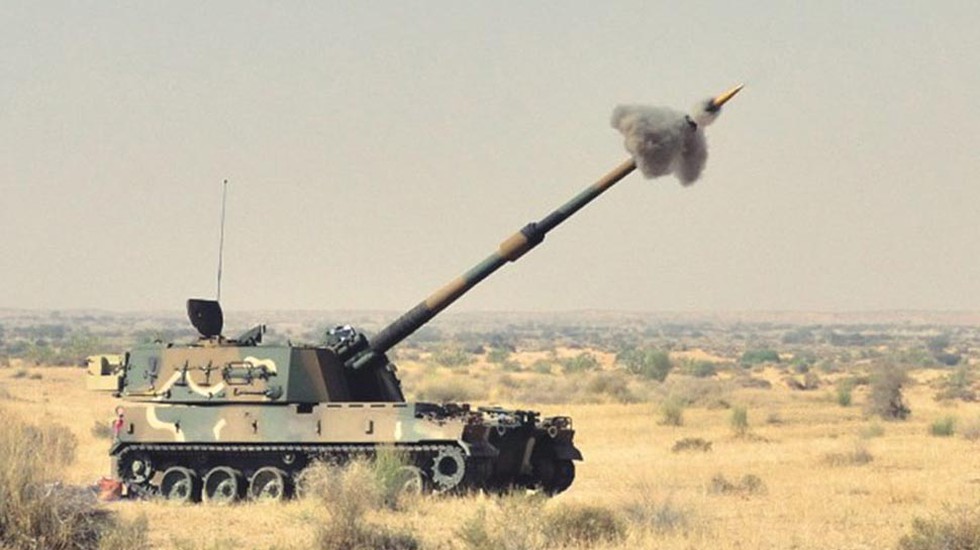
About:
- The L&T Armoured Systems Complex at Hazira will produce 100 Howitzer artillery guns, christened “K9 Vajra-T” under the make in India programme.
- The Armoured Systems Complex set-up by L&T is the “first such facility in the country’s private sector”. L&T had won the Rs 4,500-crore contract to supply 100 units of the K9 Vajra-T 155 mm/52 calibre Tracked Self-Propelled gun systems to the Indian Army in 2017.
- Future Infantry Combat Vehicles (FICV), Future Ready Combat Vehicles (FRCV) and Future Main Battle Tanks will also be manufactured at the ASC.
K9 Vajra-T:
- K9 Vajra-T is a variant of South-Korean K9 Thunder 155mm/52 calibre self-propelled howitzer.
- It has been modified for the Indian conditions to meet requirements of army, including operations in desert.
- Vajra is highly mobile with capability of moving at speeds of over 60 km per hour.
- The howitzer being self-propelled provides tactical advantage as it can be used at different points on the battlefield.
Prelims Pointers
Jan. 20, 2019

About:
- Seismic imaging is a tool that bounces sound waves off underground rock structures to reveal possible crude oil– and natural gas–bearing formations.
- Working:
- Seismologists use ultra-sensitive devices called geophones to record the sound waves as they echo within the earth.
- By studying the echoes, petroleum geologists seek to calculate the depth and structures of buried geologic formations.
- This analysis may help them identify oil- and gas-bearing reservoirs hidden beneath the earth's surface.
- Seismologists use ultra-sensitive devices called geophones to record the sound waves as they echo within the earth.
- Recent discovery by BP: It used a software known as Full Waveform Inversion (FWI), which is run on a super computer and analyses reverberations of seismic sound waves to produce high-resolution 3D images of layers of rock under the sea bed, helping geologists locate oil and gas.
- Significance:
- The success of technology marks a major leap forward for deep water exploration — a costly business known for its low success rate and high risk.
- It is an example of how technology is helping deep water make a comeback after a decade when the industry has focused on advances in onshore shale.
- The success of technology marks a major leap forward for deep water exploration — a costly business known for its low success rate and high risk.
Prelims Pointers
Jan. 20, 2019

About:
- The new course by IIT-H will have 20 seats and the eligibility is clearing the JEE-Advanced test. The course will also focus on application verticals such as healthcare, agriculture, smart mobility, among many others.
- Launch of a full-fledged B. Tech in AI by IIT-H is a first for the country and only the third globally. Besides IIT, Carnegie Mellon University and Massachusetts Institute of Technology (MIT), both of which are in the US, offer full-fledged B. Tech programmes in AI.
- Comment: The B. Tech programme in AI is a step in the direction of addressing this highly skewed demand-supply scenario.

